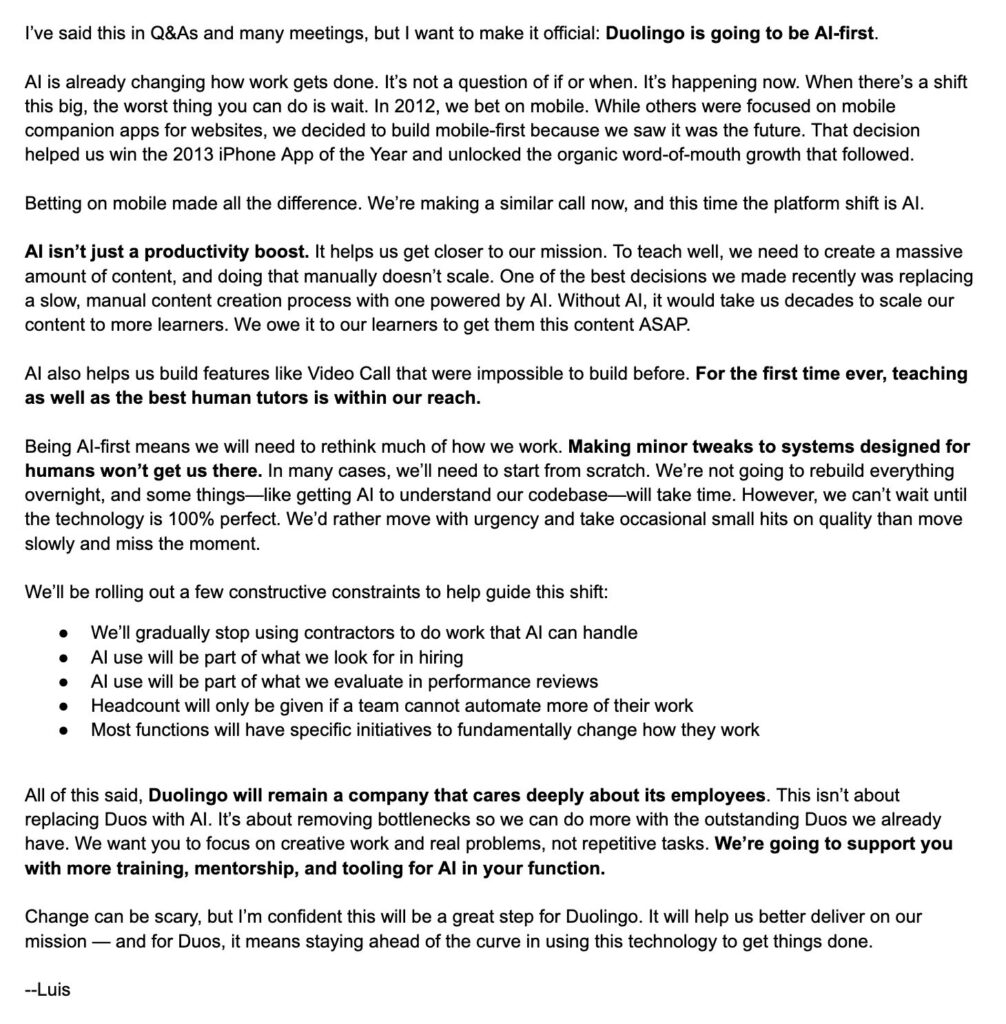
AI Backlash is Back in Big Brands Because of This Major Reason
AI backlash has made its comeback. LinkedIn posts and Reddit discussions are not the usual suspects behind the backlash — this time, it is quarterly reports and CEOs backtracking on their AI views.
AI has been gaining momentum for a decade. However, the push toward AI adoption has increased in the past couple of years. Ultimately, this adoption leads to the firing of humans in organizations. The anticipation of AI backlash was there, but why would brands hear the complaints or face the reality, unless it cracks their numbers?
Klarna, Duolingo, and McDonald’s are some prominent names in the industry that stepped ahead with AI adoption and began replacing humans with AI bots. What they did not anticipate was ‘customers turning away.’
Today, we are going to dive deep into the customer psyche and why brands are facing the heat of AI backlash.
Injunction of AI in customer-centric departments
In mid-2024, Klarna, a Swedish fintech company, made headlines, from “saving millions after deploying GenAI in digital marketing” to “firing 700 workers and setting up internal AI chatbots for customer service.”
Using AI in digital marketing—such as generating images from LLMs—was kind of cool for the audience. However, when it came to interacting with AI bots for support queries, the company realized it had made a mistake.
Klarna dreamt of 100 percent AI in customer service. The Buy Now, Pay Later firm saw efficiency, affordability, quick response times, and bots that don’t need breaks. But they forgot to think about the customer psyche. Customers aren’t bots—they are humans with empathy, anger, sadness, happiness, and impatience. In short, humans are emotional beings, and robots can’t understand that, except to mimic it badly.
It didn’t take long to reverse the decision to replace humans. Now, they’re planning to offer human support only to VIPs.
At a fireside chat at London SXSW, the CEO of Klarna said, “We think offering human customer service is always going to be a VIP thing.”
I see the point… but I can also see a world where this backfires. What do you think about human support being reserved for VIP customers? It sounds dystopian to me. First, you replaced your employees with AI bots. Then, when the decision backfired, you decided to reintroduce human support—but only for those who can pay for it.
These brands are following the mantra: “Businesses should never go into loss.”
They’re going to come back with more charges and more absurd offerings, just like the Black Mirror S7 episode Common People.
AI rush made the Duolingo CEO forget the reality of his product
Duolingo is a user-favorite app for the company’s Owl mascot and its aggressive, unhinged marketing tactics. However, the hate-train against Duolingo left the station when the language-learning app’s CEO, Luis von Ahn, published a memo outlining a plan to make it an “AI-first” company.

Language-learning CEO’s “AI-first” memo reflected a bold internal realignment: aggressively embedding AI into Duolingo’s DNA to automate contractors, accelerate content scale, and weave AI usage into all performance metrics.
Following pushback, he clarified that full-time staff aren’t being replaced and emphasized investing in employees through training and new hiring.
The numbers paint a compelling picture: unprecedented user growth, backlog of premium subscribers, and tech-fueled financials. But the challenge remains balancing aggressive AI adoption with quality control, employee trust, and public perception.
Going forward, clear communication and measured execution will be key to ensuring Duolingo’s AI pivot enhances, rather than undermines, its global mission.
AI in customer service is a turnoff for customers
The kerfuffle around AI in customer service has made enough noise for brands and marketing professionals.
A December 2023 survey of 5,728 consumers by Gartner found that 64 percent would rather companies not use AI for customer support. Even more strikingly, 53 percent said they’d switch to a competitor if a company adopted AI service assistants.
The primary reasons? Users fear that AI bots make it harder to reach a real person, offer incorrect answers, displace employees, and mishandle sensitive data. Despite 60% of customer‑service leaders feeling pressured to deploy AI, the backlash among customers remains formidable.
A recent Gartner survey of 163 customer service and support leaders in March 2025 revealed that 95 percent have decided against fully replacing human agents, opting instead for a hybrid AI‑plus‑human model.
This caution is grounded in reality: half of the firms that initially planned to cut staff via AI are expected to reverse course within two years.
In the UK, 42 percent of consumers admit being noticeably ruder to AI bots compared to humans, and 57 percent have abandoned purchases due to inadequate support. Many users are willing to pay extra for a human over an AI assistant.
AdPulse has been saying it again and again
We at AdPulse have been predicting the AI backlash on numbers as well as on creativity for a long time. AI is a tool, not the storyteller. The power to shape narratives—and truly connect with audiences—still belongs to you.
AI often faces accusations of inclusivity and class biases. There’s a constant need for growth and improvement. Companies like Klarna might give the impression that a human-led workforce is replaceable, but that’s not entirely true. While AI can automate tasks and enhance efficiency, it can’t replicate the human touch that fuels creativity and connection.
Coca-Cola tried to do a Christmas advert made by AI tools. That did not do well for the company. Nobody is talking about it and seems like something else will overshadow it next time.
But here’s the thing—while AI tools are exceptional at enhancing speed and efficiency, they still lack the essence of human intuition.
Cut to the chase
AI backlash has shown a mirror to businesses and CEOs. Customers are raging with pitchforks. Both consumer feedback and industry surveys show that a purely AI-driven service model alienates users and often fails in practice. The goal is clear: streamline service while preserving emotional intelligence, transparency, and real human connection.

